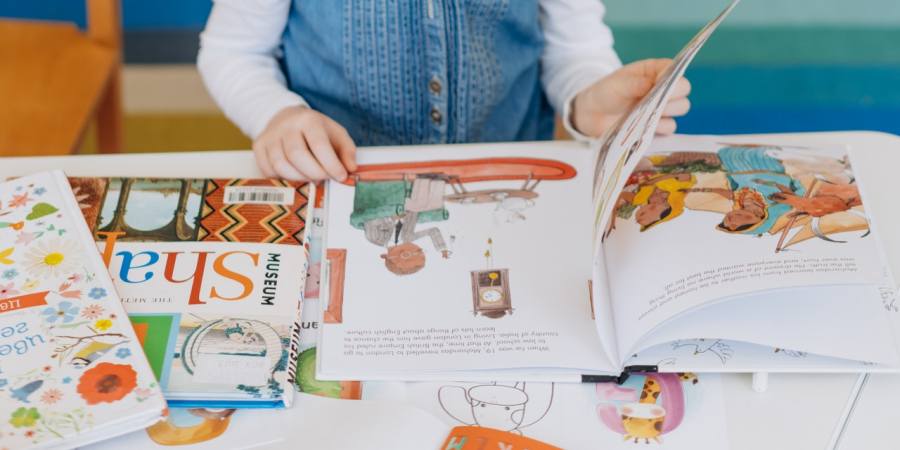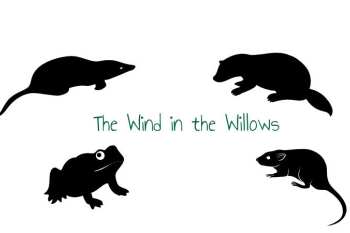How Many Pages in a Children’s Book? (Average)

Children’s books offer unlimited opportunities for authors and children. With tough, colorful covers and exciting illustrations, you can effortlessly design and publish your children’s book. You’ll produce a chapter book, a toddler book, or a picture book that children across generations will enjoy reading.
The average number of pages in a children’s book is 32 pages. This number is the industry standard and the most economical. The pages are produced in multiples of eight, and the books have an even number of pages. An odd number of pages will result in a single page that can’t be bound.
Deciding the number of pages to include in your children’s book will depend on genre and publisher requirements. However, the primary determinant is the target age group. Below is a detailed description of the average page count for children’s books in different age groups.
Categories of Children’s Books
The number of pages in your children’s book should correspond to your target age group. Although children’s books are typically 32 pages, some have fewer or more pages. Non-fiction books and those with an established audience are usually longer. You’ll need to confirm whether your publisher has a page limit.
Most printers prefer the standard 32 pages because they can print the entire book on a single sheet. More pages will result in a book that’s too thick to bind. Printers will charge more for books with more than 32 pages. However, if you opt for print-on-demand or e-books, you can add as many pages to your book as you need.
Here are the different categories of children’s books and the average page count.
Board Books (0 – 3 Years)
These are tough, heavy-duty books for babies and toddlers made from thick cardboard. They can withstand chewing, gumming, or being treated like toys.
Board books are heavy on illustration and contain between 10 – 20 words spread across 10 or fewer pages. Sometimes, board books have pictures only and no text. They may tell a story or follow a theme. They cover simple early learning concepts such as:
- Letters
- Numbers
- Colors
- Feelings
- Fundamental family dynamics
Picture Books (3 – 8 Years)
When people talk about children’s books, they often refer to picture books. The standard for this category is 32 pages, including introduction, copyright information, cover pages, and back flaps. However, they can be any length in multiples of eight up to a maximum of 56 pages.
Picture books rely heavily on illustration and text between 100 – 1000 words. They sometimes extend into the board book category and are printed in both formats. They use rhythm and repetition to engage the young listeners.
Picture books offer approachable, universal themes and child-relatable situations. They also challenge the child’s imagination. When writing a picture book, one rule of thumb is to have a question, main character, theme, plot, and an answer to end the story.
Easy Readers (5 – 8 Years)
Easy readers have between 32 and 64 pages containing more text than an average picture book. The text is repetitive and straightforward because the books target emerging readers. They repeat a specific phrase or word for the readers to memorize.
The simple sentence structure is easy for the reader to read silently or aloud. These books usually have illustrations on every (or every other) page.
The easy readers’ category usually explores one lighthearted theme, idea, or subject. They’re often character-based, and the final word count doesn’t exceed 3500 words. Sometimes, they have a few sections or chapters to make it easy for the child to break. Often, early readers come in series.
Chapter Books (7 – 10 Years)
Chapter books are typically less than 100 pages, with few or no illustrations. They target young, advancing readers in the elementary school age. They range in difficulty from simple language to complex sentence structures.
Many chapter books base their content on a single subject or character and contain one or two simple subplots. The reading levels and the audience vary widely; therefore, this range doesn’t have an average word count. When writing in this category, follow the basic idea that books for younger readers should have fewer words.
Middle Grade (8 – 12 Years)
Middle-grade books come in sub-categories of lower-middle grade and upper-middle grade. They contain more than 100 pages with longer chapters than chapter books and often no illustrations. Series are popular because readers at this level are voracious.
Lower Middle Grade (8 – 10 Years)
Lower-middle grade books contain complex but approachable themes, with one or two subplots. They use humor to explore historical events or elemental scientific ideas. They can also use magical realism and fantasy since the children identify with these literary elements.
Upper Middle Grade (10 – 12 Years)
Readers in this age group can follow and explore complex storylines, plots, and more mature themes. Although the ideas are more advanced than those in the lower-middle grade category, the readers aren’t yet ready for the intricacies of young adult books. When writing, you can delve into intricate themes from the main character’s perspective.
Upper middle-grade books have an average word count of 50,000 but can sometimes go up to a maximum of 70,000 words.
Young Adult (13 Years and Above)
Books in the young adult category are ideal for teens from 13 years to adults. The content merges with adult literature, especially for sci-fi and fantasy genres. Young adult books read like adult novels with multiple characters in complex stories and plots.
Young adult books explore topics and issues that teens can identify with daily. Themes include difficult and complex subjects like violence, sex, abuse, drugs, and politics. These ideas may not be in all the young adult books, but most of them will have at least one since they’re the issues that teens face daily.
Young adult books typically have at least 250 – 300 pages or more.
Since you are interested in knowing how many pages are in children’s books, you will surely want to read our blog post about the word count of books and children’s books: Average Book Word Count
Final Verdict
When writing a children’s book, you must consider your target age group. For younger children, the principle of less is more works best. You have to rely more on illustrations and less on text for babies and toddlers, or even have a picture book without text.
As the age of your readership progresses, you can include more text and fewer pictures. Think about the attention span of the target readers and how much they can handle. The page counts in this article are just averages, but you can use them to create a framework for your book.






